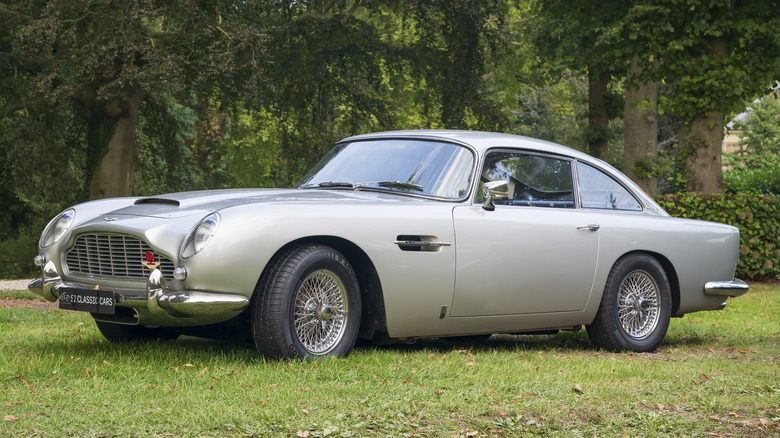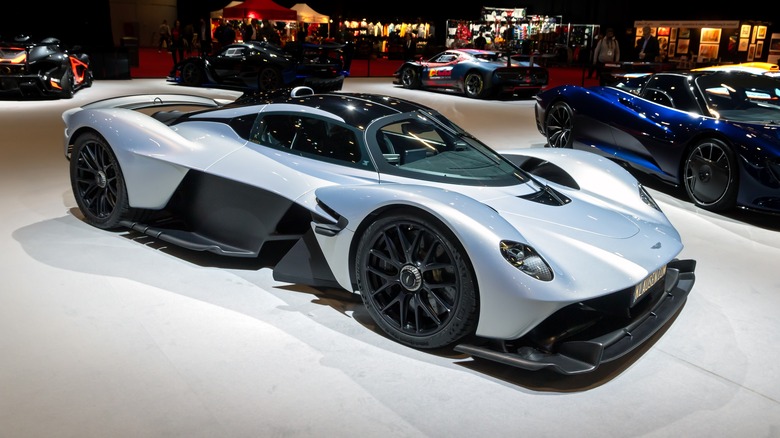Why Aston Martin Car Models Start With A 'V'
Most people recognize Aston Martin as the car driven by none other than James Bond, the Secret Intelligence Service (MI6) spy created by Ian Fleming. The legendary connection between Bond and the DB5 was established in the 1964 film "Goldfinger" and has remained inseparable since. The brand name dates back to 1913, when two car dealers – Lionel Martin and Robert Bamford — sought to build and sell their automobiles rather than those of others. Martin had experience building race cars for a hill climb course called Aston Hill, and Aston Martin was born.
The "V" car designation first appeared in 1951 as "Vantage," a high-performance variant of the DB2 powered by a 125 bhp engine as opposed to the 105 bhp found in the standard model. According to Aston Martin, the "V" cars were meant to represent "a significant increase in performance and desirability." In other words, they were the pinnacle of their class. The name implied that the owner had the ability to afford an advantage, thus having superiority. Many of the "V" car names either have similar bold, dynamic meanings, or a connection to fabled figures from Norse, Roman, Greek, or Cretan mythology.
However, the company's connection to ancient history started even earlier. In 1927, they changed their logo from a round shape to one with wings. It was redesigned again in 1930, this time with tapered wings that ironically formed a V shape. In 1932, feathers were applied. These changes resulted from the restructuring of ownership during a time when Egyptology was all the rage. The scarab beetle represented new beginnings and eventually became the established logo.
V for very vaunted names
After World War II, David Brown bought Aston Martin (which always seemed to be on the brink of bankruptcy) as well as the luxury car brand Lagonda. Over the next quarter-century, he made the Aston Martin brand what it is today. The previously mentioned DB line bears his initials, and under his reign, the "V" cars emerged, with the Vantage badge first appearing on the DB5.
The first "V" car that wasn't some variant of the DB, however, was the short-chassis Volante in 1965, which — shocker! – was a hybrid between a DB5 and what would become the DB6 model. The name means "flying" or "moving lightly and quickly" in Italian, so it conveyed the appropriate je ne sais quoi that Aston Martin was trying to communicate to the market. It was also the company's first convertible, but not the last. The 2026 Volante model is a great daily driver — if you have the money.
What followed was a string of vehicles with very vaunted names. Virage is a French word that means "bend" or "change," and thus suggested it was meant to quite literally change the world. Vanquish is obvious: conquer your opponent absolutely. While most will associate Vulcan with Spock from "Star Trek," Aston Martin was referring to the Ancient Roman god of fire and metalworking. Valkyrie is a Norse woman who decides which warriors die in battle, then escorts them to Valhalla (another Aston Martin car), Odin's drinking hall. The Vignale was a concept car shown at the 1993 Geneva International Motor Show to gauge interest in a four-door Lagonda-badged model from Aston Martin.

